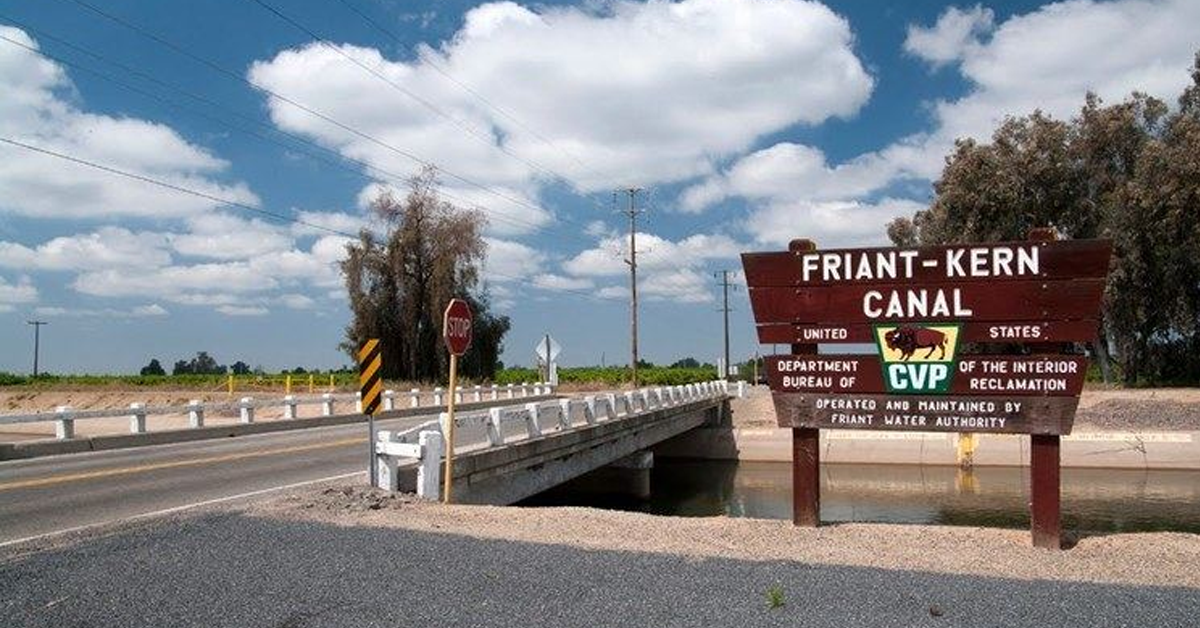Less than one month after a substantial hike in water supplies, Federal and state water managers announced that Central Valley Project (CVP) and State Water Project (SWP) contractors will receive their full allocation for 2023, water agencies announced Thursday.
While initial water allocation for the two major water projects was conservative, additional atmospheric river systems boosted hydrological conditions and storage volumes, with the likelihood of a “Big Melt” of Sierra snowpack ahead this spring.
Driving the news: Both North-of-Delta CVP Contractors and South-of-Delta CVP Contractors for irrigation water service and repayment contractors will see their allocation increase 80 percent to 100 percent of their contracted total.
- Municipal and industrial water users for both areas have been increased from 75 percent to 100 percent of their historical use.
- Friant Division Contractors, who receive their water supply from Millerton Lake are also seeing an increase in water supply allocations. Class 1, which is the first 800,000 acre-feet of available water supply, remains at 100%. Class 2, which is the next amount of available water supply up to 1.4 million acre-feet, was previously increased from 20 percent to 70 percent on March 7. It is holding at 70 percent.
- California’s Department of Water Resources announced later Thursday that SWP contractors relying on the California State Aqueduct will see 100 percent of their water allocation, a feat that is occurring for the first time in 17 years.
What they’re saying: Local water agencies, particularly on the westside of the San Joaquin Valley, praised the announcements.
- “Given the positive snowpack and reservoir levels throughout the Central Valley Project, the San Luis & Delta-Mendota Water Authority is pleased to see another increase in water allocations for Authority member agencies,” said Federico Barajas, Executive Director of the San Luis & Delta-Mendota Water Authority. “I’d like to extend appreciation to the Bureau of Reclamation for their work in navigating the complexities of this water year, which began with preparations for a third year of drought and quickly transitioned into flood management. While this year has brought a much needed respite from the dry conditions that our members have experienced for the last three years, we know that California’s hydrology is becoming increasingly variable and dry conditions could return quickly.”
- “We are exceedingly grateful to Reclamation, and its dedicated and hard-working staff, for the increased water allocation. Following two years of 0% allocations, this announcement will provide much needed water to support the District’s communities, family-owned farms, and hard-working families in the San Joaquin Valley. This water supply will assist growers in Westlands with putting the land to work to grow the food that feeds the world,” said Westlands Water District interim general manager Jose Gutierrez. “At the same time, we must recognize the need to continue preparing for the next drought and future dry years. For that reason, Westlands is investing in a sustainable water future for our farmers. Westlands is exploring and implementing creative approaches to maximize water use efficiency, recharge and storage and improve climate resilience.”
- “Today’s long-awaited announcement is welcome news and a big relief to our family farms, local economies, and communities that have suffered from drought conditions, burdensome regulations, and below adequate water allocations for years,” said Rep. David Valadao (R–Hanford). “We must ensure these allocations are not reduced as the water year progresses. While many of us are thankful for this rainfall, we also know there is an immeasurable amount of water from these storms that we won’t be able to capture and store due to a lack of water storage infrastructure. We need to be proactive about fixing our water storage and infrastructure issues so that we are better prepared for these kinds of weather events, and resilient to periods of drought.”









